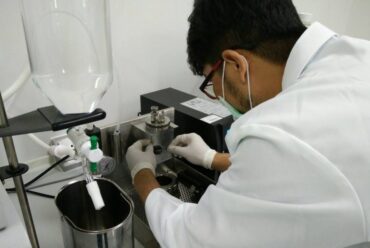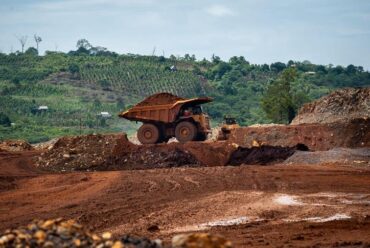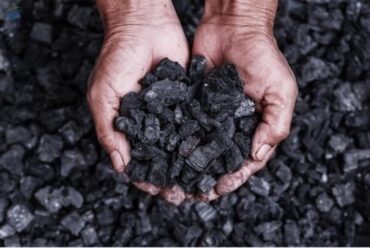Indonesian Crude Palm Oil And All You Need To Know About It
Crude palm oil, a vegetable oil that is extensively used for cooking. This palm oil is commonly found in kitchen around the globe and it has to do with its price that is undoubtedly affordable for most people.
Moreover, crude palm oil are easy to produce and need minimal resources to manage. In addition, crude palm oil also used for cosmetics, cleaning supplies, self care products and even biofuel.
Mostly, crude palm oil are produced in Asia, Africa, and South America. It is because palm tree needs warm temperature, direct sunlight, and high intensity of rainfall. Therefore, geographically the three continent mentioned above fits perfectly for palm tree to grow.
Crude Palm Oil Manufacturers in Indonesia
In Asia, Indonesia are proven to be the biggest manufacturer of crude palm oil around the globe. Moreover, the production of crude palm oil are dominated by Indonesia. Indonesia provide up to 85% of total production of crude palm oil from the entire world. Consequently, Indonesia become the largest emitter after China and America.
In substansial period of time, the demand of crude palm oil accross the world has been raising significantly. This is due to the increasing population escalating the consumption of palm products including crude palm oil. On top of that, government in several country encourages the use of biofuel.
Production of Crude Palm Oil in Indonesian
Few industries in Indonesia have developed as rapidly as the palm oil industry over the last two decades. This growth is also reflected in production and exports from Indonesia, as well as the growth of oil palm plantations.
Driven by rising global demand and rising profits, crude palm cultivation has increased significantly by both smallholder farmers and large-scale entrepreneurs in Indonesia (as many farmers switch to farming, environmental (for crude palm cultivation).
In fact, most of the crude palm oil produced in Indonesia is exported. However, as Indonesia’s population continues to grow (along with a rapidly expanding middle class) and the government supports biodiesel programs, so does the domestic demand for crude palm oil in Indonesia.
Undoubtedly, rising domestic demand for crude palm oil could mean that Indonesian crude palm oil shipments will stagnate in the coming years if the Indonesian government continues to maintain a moratorium on peatland conversion.
In order to maintain an effective and efficient production budget and time, and to control high production quality, it is necessary to produce crude palm oil in factories using modern processes.
Here are step by step production of Indonesia crude palm oil, this method has been used since many years ago by the ancestor.
- Bunch of mature crude palm freshly harvested to collect high quality of crude palm
- Bunch of crude palm are being boiled to remove unneccesary enzim that can decompose the oil produced
- Soft bunch of crude palm are treshed with tresher machine to remove crude palm from its stem
- Crude palm are squeeze into compressed machine to produce crude oil. On this process there are pulp and fruit flesh left
- Crude oil needs to be strained to remove any pulp or fruit flesh. Crude oil tank and depericarper machine is used for that
- Oil mixed with water is separated from the steam. In the light phase, oil, water and oil density are absorbed into the flow setting tank and transported to the oil tank. The heavy phase containing oil, water and heavy lumps is received in a sludge tank and conveyed to a sludge separator to separate oil from water.
- Place the oil in a vacuum dryer and remove any remaining moisture until the amount of oil is minimal or below the threshold. Oil refining is usually done twice in the refining process to produce a clearer edible oil.
Composition of Crude Palm Oil
Crude palm oil composition include compound content, fatty acid composition, physical and chemical properties. Moreover, the physical and chemical properties of crude palm oil depend on the purity and quality of the oil.
Compound Content of crude palm oil
Triglycerides: 95.62%
Free Fatty Acids: 4.00%
Water: 0.20%
Phosphatides: 0.07%
Aldehyde: 0.07%
Microtene : 0.03%
Fatty Acid Composition of Crude Palm Oil
Oleate (C18:2) : 27 – 52%
Palmitate (C16:0) : 32 – 59%
Linoleate (C18:2) : 5.0 – 14%
Stearate (C18:0) : 1.5-8%
Linolenic (C18:3) : <1.5%
Laurate (C12:0) : <1.2%
Palmitoleate (C16:1) : <0.6%
Myristate (C14:0) : 0.5 – 5.9%
Physical and chemical properties of Crude Palm Oil
red-orange acid number : 6.9 mg KOH/g
iodine value: 50-55g I/100g
Saponification value: 224 – 249 mg KOH/g
Melting point: 21 – 24˚C
Refractive Index (40˚C) : 36.0 – 37.5
Comparison of physical and chemical properties of crude palm oil before and after refining
Initial melting point: 21 – 24 à 29,4
final melting point: 26 – 29 à 40,0
iodine value: 14,5 – 19,0 à 46 – 52
Refractive index 14,5 – 19,0 à 46 – 52
Nearly 70% of crude palm plantations are located on Sumatra, where the industry began during the Dutch colonial period. The remaining 30% are mostly in Borneo.
Future Prospects for Indonesia Crude Palm Industry
The commodity boom of the 2000s has benefited Indonesia, which is blessed with abundant natural resources. Indonesian crude palm oil prices have risen sharply since 2005, but the global crisis of 2008 caused CPO prices to plummet.
Despite a strong recovery, CPO prices have fallen since 2011 as demand, particularly from China, has fallen. The demand is declining. The short-term prospects for the palm oil industry are therefore bleak, especially as Indonesia remains overly reliant on CPO compared to refined palm oil products.
Crude palm is arguably one of the world’s most important sector industries. Furthermore, every aspect which revolves around agricultural commodities should also be subjected to inspections to ensure its quality. After all, a successful agriculture business depends on the faultless delivery of its commodity.
Tribhakti Inspektama will help ensure the smooth running of your agriculture business especially palm oil parameter analysis through our excellent commodity survey services. Find out more about our palm oil parameter analysis here: https://www.tribhakti.com/services/sbu-agriculture/







